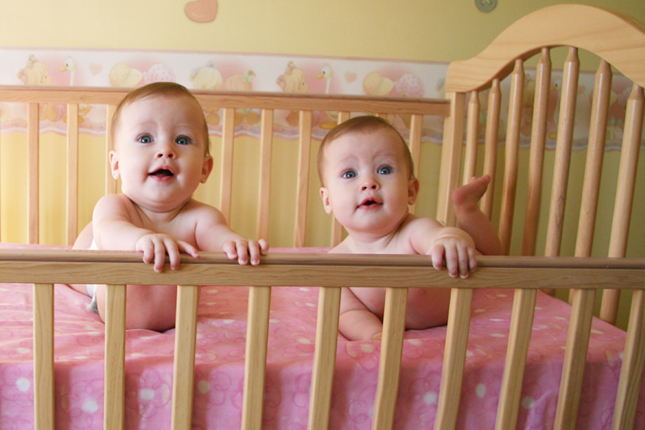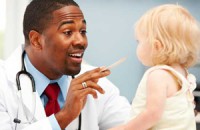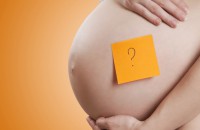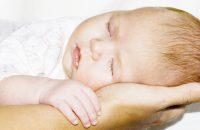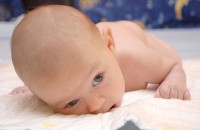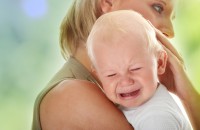Twin Talks
Twins and SIDS
[00:00:00]
Please be advised, this transcription was performed from a company independent of New Mommy Media, LLC. As such, translation was required which may alter the accuracy of the transcription.
[Theme Music]
SUNNY GAULT: It’s a parent’s worst nightmare; your seemingly healthy twins go to sleep one night and one or both of them never wake up. It’s called sudden infant death syndrome or SIDS. And while the cause is unknown there are simple steps twin parents can take to protect their babies. Today we’re talking with a mother who lost one of her twins to SIDS as well as the NICU nurse who’s also an advocate for SIDS awareness. This is Twin Talks.
[Theme Music/Intro]
SUNNY GAULT: Welcome to Twin talks, broadcasting from the birth education centre of San Diego. Twin Talks is your weekly online on the go support group for expecting and new parents of twins. I’m your guest host Sunny Gault.
Have you heard about the Twin Talks club? Our members get bonus content after each new show, plus special giveaways and discounts. You can subscribe to the Twin Talks newsletter and you can also learn about our latest episodes available. Another way for you to stay connected is by downloading our free Twin Talks app it’s available on the Android, IOS and Windows Phones.
[Theme Music]
CHRISTINE STEWART-FITZGERALD: Here’s a question for one of our experts, it comes from Jamie of Pennsylvania. Jamie writes: The hospital I’m delivering at offers a multiples class. Is this the best type of preparation for having twin babies? Would you recommend taking a twin class like this or is there another way to better prepare?
JONAROSE FEINBERG: Hi Jamie, this is JonaRose Feinberg, I’m an IBCLC mom of twins and editor of www.breastfeedingtwins.org . I definitely recommend taking a multiples class to the hospital if it’s available. These classes are generally a good source of basic information about multiples pregnancy and what to expect after your baby has arrived.
Many classes invite experienced parents of multiples back to class to answer questions for the expecting parents. Class content can vary widely. Some of these classes are more focused on pregnancy related topics such as diet and preventing pre-term labour. Some provide an overview of hospital policies and practices around the multiples delivery at that facility. Some educate parents of post-partum issues such as breastfeeding and new born care. Depending on the content of your class, you may want to supplement with other class on specific topics such as new born care, breastfeeding or hospital tour.
You can also reach out to an IBCLC in your area for a private customized pre-natal breastfeeding preparation, if that’s not part of the class. Twins Club and online groups are another great resource. You can join your local Twins Club or reach out other moms of multiples online. Local groups also have expectant or new moms meeting if you can attend now to get advice from moms who have recently ventured the adventure of twin pregnancy.
It may can usually offer local resources and referrals. Different groups have different personalities so be on the lookout for a good fit for your needs. You can also supplement the class offering for some of the many books about twins that are available. I often suggest Mothering Multiples by Karen Gromada as a great overview with both pregnancy and post-partum information. This is also the best book on the market for information about breastfeeding multiples.
Your local twin club may have a lending library or a club sale where you can pick up some other books about twin pregnancy and parenting. Everyone has their own favourites so flip through a few books and see what seems most helpful. Again, congratulations on your pregnancy. Take it easy, keep them cooki’n and enjoy this new adventure. Come visit me online at www.breasfeedingtwins.org for more information and tips
[Theme Music]
SUNNY GAULT: So today we are talking about a very important episode, we’re talking about twins and SIDS and for those of you who don’t know what SIDS is, it stands for Sudden Infant Death Syndrome. It’s a very hard topic to talk about. We have a guest on the phone today who’s going to share her story. Her name is Sara Peterson. And Sara has twins. One of her twins Kaia Star passed away due to SIDS. Her surviving twins name is Sage Madeline and we’re really thankful for Sara to come on the show and share her story. Sara thank you so much for being here
SARA PETERSON: You’re welcome. I’m glad that you’re looking at this topic. Because it’s an important topic
SUNNY GAULT: So Sara take us back a little bit. Kaia died at about eleven weeks. So take us through their birth a little bit and that time leading up to Kaia’s death
SARA PETERSON: Okay. I was thirty eight weeks when, when I got induced and I had a midwife attended vaginal birth. It took about twenty four hours. It took a really long time, they’re seventeen minutes apart. Kaia came out, she was the second one. She was my baby B. I had trouble getting them to latch and so I pumped for them. You know I did that and we had to supplement with formula a little bit but everything was very normal.
Everything went very well. I was very, I guess hyper aware even of SIDS and try to follow the rules like I had fans in the house. I was worried about, I don’t want them to be over heated. We did swaddle them a lot. But that seemed to be how they would sleep the best you know. With another pumper in the crib took it out you know [inaudible] we’re just, we’re very diligent about all of that, all of the rules.
So I was following the rules. And I remember the day before she died, February twenty first was a kind of a warmer day because it was a pretty harsh winter. And we took them, we live in Ashville, we took them to the [inaudible]. And I had actually taken them there couple of other times and then we start out high and we have pictures and so that’s kind of nice but I’ll never forget that day because that was like the last full day.
And my husband Chris and I, we were kind of taking turns sleeping and kind of being the one on at night. And so that night I have been the one getting up with them. You know it’s my turn to go to sleep, it was like early in the morning, it’s my turn to go to sleep and I went and gotten into bed and I talked to Chris because I woke him up. And I talked to him for a few minutes. And then on the monitor we heard one of them crying and I was like I think that was Kaia because I just fed Sage.
So he left to go see her and I went to sleep. And I guess I only slept maybe an hour and he came in and woke me up and he said something’s wrong with Kaia. And he heeds her to me and I can immediately tell that there’s something wrong. She just was kind of pale and not like sloppy but something was, something was not right about her. And she wasn’t breathing and I was just like immediately kind of getting panicky. You know, and I told him to call 911 and to go get our neighbour. And I started trying to do CPR but I was so panicked that I just wasn’t doing a good job. And I ended up mostly just begging her to wake up.
Then the neighbour came, and I had to call 911 too because I thought it would help make them come faster. Eventually the, I guess it was like the first responders were fire fighters team. And they started working on her and I left the room. And then the ambulance finally came. They took her, you know, I didn’t know at that point that she would wake back up. That she could wake back up. I didn’t know.
So, we left Sage with our neighbours, we’re good friends with them. Chris drove us to the hospital, and then when we got there, the chaplain that was at the door and that really scared me. Because I thought, okay she’s gone. And, but I asked. I was like is she you know she dead and she said they’re working on her. And so they took us in the room where they were working on her.
And I remember this doctor kept looking over at me and I thought if he tries to tell me they’re done, you know I’m going to freak out because they can’t be done. They cannot give up. And the nurses were crying. There, I mean, there with all these people in there, the nurses are crying. And I remember noticing that and the chaplain was sitting with us and then eventually that doctor did, he looked at us and he said, she’s gone, you know there’s nothing else we can do and I’m like you have to. And I remember saying to him, she has a twin and you have to do this for her twin. Because I remember in my mind thinking like you can’t have one twin. That’s not going to, anyhow it’s not possible.
It always very surreal obviously, like just how could this be happening. They took us to another little room, I guess all that was in the ER. And we got to hold her for a long time. And I just talked and say everything that was on my mind and immediately started blaming myself in every possible way. I mean I thought it could have happen because I had that thought, you know, it really is that thought. I just thought of every possible thing that it could be I was a bad person. And I never wanted to leave my child here you know and go home without her.
They said, you have to go home to Sage, you have to go home to Sage and eventually to get. And I remember, I had to go to the restroom because I’ve been holding it the whole time and I went. And when I was walking back to leave, I walked back by that little room and the nurse was holding her and talking to her. And I remember just being really touched by that because I didn’t know what happened when I left the room.
You know I left my job there. And this feeling like, they’re honouring her, they’re treating her like a real person because she is. And they just sent her to the medical examiner in another city to have an autopsy which of course we didn’t wanted you know anybody messing with her but I guess it’s like the law that they have to do that. Which of course later was good in a way because then they ruled out you know all these different things.
Sage during that week waiting next to the funeral, we had taken her to all these different specialists and had tests done because of that and I thought you know what if she got it too and I was terrified. And just nothing was coming back, like there is really no problem. The cardiologist was really informative because she had studied SIDS and they were looking at maybe this [inaudible] syndrome.
We did all that and really never found any answers. I even called one of the doctors whose name was Saira who did, who had done some of the autopsy or you know most part of that. And she answered my questions and I was you know could she have choked? Because she had just eaten right before, was it this? Was it that? And they were like no, no, no, really to everything. Which was good because there is a way for me to just realize, there’s nothing we could have done, there is nothing we could have done. We did everything.
We certainly we don’t smoke, you know they weren’t preemies, they weren’t underweight. I gave them breast milk, they sleep on their backs. I followed every rule and this happened anyway and that was really hard for me to accept because I thought I could prevent it and then I was told all we could do was reduce the risk which we did
SUNNY GAULT: Is there any, I mean it’s such a hard topic to talk about because it’s not like, like you said before that it could have been prevented but for the twin parents that are listening out there, do you have any advice or thoughts
SARA PETERSON: I mean with twins it’s so hard because you’re just trying to survive but then you’re like what can I do to survive and I think it’s just tough because you’re trying to get sleep and you’re trying to get them to sleep. You know and one thing I’d wish is that I have them in the same room with me to sleep because you know we were taking turns.
But Chris is awake when Kaia died he was in the other room you know he didn’t know that she was taking her last breath. Sage slept in a sleeper from that night on but I will say that I have read, researched about babies sleeping next to their mom and how that can help regulate their breathing and their heart rhythms. And I think that that would be my one regret. Because that you know she wasn’t right there next to me. And I’ll know that I wouldn’t have prevented it. I mean it did – it might not have . . .
SUNNY GAULT: Right
SARA PETERSON: And I’ve accepted that. You know that even if she hasn’t lain next to me, it may still have happened
SUNNY GAULT: Well Sarah I’m, I’m so sorry for your loss. I know this happened a while ago but that, I’m sure that that is still with you on a daily basis. And I know it’s hard to talk about. I love to hear though the joy that you have in your voice when you talk about Kaia I think that’s very beautiful and I’m glad you were able to hang on to that. But thank you for being with us today and we appreciate it
SARA PETERSON: Yeah, you’re welcome
SUNNY GAULT: When we come back, we’ll talk with Christine Perez, a NICU nurse at Tri City medical Centre. She’s also an advocate for SIDS awareness. She’ll tell us more about what SIDS is, the risk factors and what twin parents can do to help protect their babies from SIDS. We’ll be right back
[Theme Music]
SUNNY GAULT: Joining us today is Christine Perez, she is a NICU nurse at Tri City Medical Centre. She’s also a SIDS awareness advocate. So, Christine thanks so much for being with us today
CHRISTINE PEREZ: Thank you for having me
SUNNY GAULT: So, let’s talk about what SIDS is. I know there’s a lot of question marks around this but, what is SIDS?
CHRISTINE PEREZ: So Sudden Infant Death Syndrome is sudden death of an infant that is less than one year old which can’t be explained through thorough investigation. It is actually the leading cause of death in babies one month to a year
SUNNY GAULT: So do we know how many infant deaths are contributed to SIDS each year?
CHRISTINE PEREZ: Yes. There’s about two thousand deaths a year that are contributed to SIDS
SUNNY GAULT: Okay. And it’s probably too specific to know but for twins and SIDS, what do we know about twins and how they’re impacted by SIDS
CHRISTINE PEREZ: We do have a double the risk, a 50 percent risk of having SIDS if you have twins. And the reason for that is because a majority of twins are going to be pre-term. So it’s not specific because they are twins because they’re more likely to be pre-term
SUNNY GAULT: Okay and by pre-term we’re talking about before thirty seven weeks or
CHRISTINE PEREZ: Yes before thirty seven weeks
SUNNY GAULT: Okay. Okay. And do we have any information out there about you know just because you know if you have one twin that dies of SIDS I mean you still have another baby involved so what do we know about you know how this impacts the other twin if anything
CHRISTINE PEREZ: Unfortunately, if you look at twin research in SIDS there’s not a lot of current research a lot of the research was done in the 1990’s. And from what I did find is about one percent that the other twin could pass also
SUNNY GAULT: Okay and it doesn’t specify you know fraternal, identical or anything like that, nothing that specific?
CHRISTINE PEREZ: No. It’s really limited information
SUNNY GAULT: Okay
CHRISTINE PEREZ: There need to be a lot more research on twins and SIDS
SUNNY GAULT: The confusing part that I find is that SIDS, they don’t know what causes yet. Yet they can say what you need to put your baby on you know it’s back to sleep at night and all those kind of stuff. So, there truly hasn’t been any kind of you know, this is what causes SIDS. I just want to make that clear
CHRISTINE PEREZ: Right. There is one thing that makes it a little more easier to understand. Researchers use what’s called a triple risk model
SUNNY GAULT: Okay
CHRISTINE PEREZ: So they think there’s three things involved. And all these three areas have to be in line in order for a SIDS event to occur
SUNNY GAULT: Okay
CHRISTINE PEREZ: So, the first one is called a Vulnerable Baby. So that may mean a baby has some type of underlying abnormality of the brain or maybe something genetic and it will have an effect on their heart rate and breathing pattern. The second part of the model is first six months is of critical developmental period.
So, the sleep wake patterns and the growth changes. Now the third part of the model is the environment like the outside stressors and that are things like babies being on their backs, cigarette smoke. So those are the types of things that we can reduce the risk. So the hope is that if you reduce the risk of the outside stressors and maybe we could do, then you could decrease the risk of SIDS in general
SUNNY GAULT: Okay. So this was basically taken from babies that were classified as having SIDS right?
CHRISTINE PEREZ: Yes
SUNNY GAULT: And then you just basically look at the common denominators
CHRISTINE PEREZ: Right
SUNNY GAULT: Okay. And that’s how we come up with the risk factors for it
CHRISTINE PEREZ: Right
SUNNY GAULT: But we can’t definitely say this is what causes SIDS
CHRISTINE PEREZ: You cannot prevent, you cannot definitely say the cause of SIDS and it cannot be hundred percent prevented. All we can do is reduce the risk of happening to baby
SUNNY GAULT: What do we know about the risk factors associated with SIDS?
CHRISTINE PEREZ: So there are several risk factors associated with SIDS. One of them is pre-term and low birth weight babies. And one of the reason is cause you know they’re not [inaudible 00:18:18] babies, or not fully developed. And things may not have a fully developed neurological system. The other thing is in the hospital we have the pre-term babies in the incubator, we have them on their stomach.
We have all these nice little developmental boundaries. And the parents see that and so when they go home they want to mimic what we do in the NICU. So in the NICU what we’re trying to do is once the baby is stable and out of their little incubators is putting them on their back to sleep so we can model safe sleep for the parents. Boys are more likely to die of SIDS than girls
SUNNY GAULT: And any reason behind that that we know of?
CHRISTINE PEREZ: No. Not that we know of. It’s just when they do their research there’s been more boys than girls that have died of SIDS. They’ve noted that culturally African Americans are two times more likely than Caucasian babies to die of SIDS. There might be partly cultural.
There some studies that show African Americans are more likely to co-bed and have the baby in the bed with them to sleep. And Americans, Indian, Alaskan native population culture may have the effect of overheating because they’re known to put them in their papusi and swaddle the blankets over. They have noticed that babies being born to mother who’s under the age of twenty is a risk factor
SUNNY GAULT: Hmm did they know why?
CHRISTINE PEREZ: No it’s not a definite why, I think just when I did review of cases. Mother’s who receive late or no prenatal care. Smoking during pregnancy, if smoking during pregnancy would stop, they say that one third of SIDS could be prevented
SUNNY GAULT: Wow that’s pretty staggering
CHRISTINE PEREZ: Yes. Besides putting the baby back to sleep it’s the largest risk for SIDS. So smoking is extremely dangerous during pregnancy
SUNNY GAULT: And but, yeah, so they, but do they have any, again I keep going back to why and I don’t really know why
CHRISTINE PEREZ: Right. It’s oenological and during pregnancy what happens is something to do with the nicotine on the brain receptors
SUNNY GAULT: Okay
CHRISTINE PEREZ: And then, babies after birth that were died of SIDS, they found more nicotine in their lung tissue than babies that wouldn’t have smoke exposure
SUNNY GAULT: Okay
CHRISTINE PEREZ: So you don’t want to smoke during pregnancy. And we want to eliminate second hand smoke. Because even second hand smoke can increase the risk of SIDS
SUNNY GAULT: So Christine, let’s talk about what parents can do to help prevent this. I know the term prevent it’s you know we cannot necessarily prevent it, we don’t even really know what causes this right but we’re trying
CHRISTINE PEREZ: I’m trying to say reduce the risk
SUNNY GAULT: There you go reduce the risk, we’re reducing the risk. So let’s talk about environment specifically when it comes to sleep
CHRISTINE PEREZ: When putting your baby to a sleep position, the temperature of the room, bedding and type of bed are all important because unsafe sleep practices is a major risk of SIDS. The main one is baby’s putting, putting them on their stomach to sleep is a huge risk for SIDS. They need to be on their back.
The reason is that is when the babies are on their stomach it increases the risk of overheating, they can re-breath their expired breath which can lead to carbon dioxide build up. And that will lower their oxygen levels. Also there is a misconception, I get this a lot form parents in the NICU ‘but if my baby’s throwing up they’ll be better on their stomach’. Actually, they won’t. The baby’s natural anatomy is meant for their back. So if a baby is on their back they’re not going to throw up.
They’re either going to swallow it or they’re going to throw it out the side of their mouth. If the baby is on their back and they throw up because of the way the body is made, it’s just going to sit in the trachea and pool there, and then the baby will aspirate and choke on the food. So it’s higher risk of aspiration on their stomach than they are actually on their back because I know that’s one of the main misconceptions about putting the babies on their stomach.
The only thing I hear a lot is ‘but my baby’s sleep so much quieter and better on their belly’. And yes they do it’s because putting the baby on their tummy decreases the arousal state. And that is not going to protect them from having SIDS. You don’t want them in such a deep sleep that they’re not going to have the normal reflexes and response times. The mattress needs to be firm; you never want to have a soft mattress.
Never want to put pillow again only on the bed of the baby. And you want to share your room, not your bed. So you want to make sure that the baby is in a separate bed. So this is true for twins too. You want to make sure that they both have their own sleeping environment and their own bed in your room. Another thing that is very hazardous is falling asleep on a couch or a chair with the baby. The baby can get trapped in the sides of the couch or chair. So you don’t want the baby to be on the couch or chair alone or with anybody else
SUNNY GAULT: I know sometimes that’s tough if you’re breastfeeding your baby, I don’t know, sometimes breastfeeding puts me to sleep
CHRISTINE PEREZ: Right
SUNNY GAULT: It puts the baby to sleep and it puts me to sleep
CHRISTINE PEREZ: And that’s the thing we found with breastfeeding in the bed and SIDS is that when there is maternal fatigue from breastfeeding that increases the risk of SIDS
SUNNY GAULT: Okay
CHRISTINE PEREZ: So that’s why you want to take the baby, breastfeed the baby and when you’re done breastfeeding or you feel very fatigued, put the baby down
SUNNY GAULT: Okay
CHRISTINE PEREZ: Because that is when SIDS can occur. There was a pretty big study done in Germany and they found that exclusively breastfed babies at one month had half the risk of SIDS. So there is newer studies showing that babies that are breastfed exclusively have less risk of SIDS than babies that are not
SUNNY GAULT: I know for my own personal experience and nursing my own babies that at least in the beginning they had the tendency to wake up a little bit more frequently
CHRISTINE PEREZ: Yes
SUNNY GAULT: Have you heard about that?
CHRISTINE PEREZ: And that is one of the reasons why breastfeeding is safer because the babies are more easily aroused. Formula fed baby sometimes three, four hours before they wake up. But you may probably know breastfed babies sometimes every two hours will be ready to eat
SUNNY GAULT: Right. Especially when they’re really
CHRISTINE PEREZ: Yes
SUNNY GAULT: Small. They’re waking up all the time
CHRISTINE PEREZ: The parents probably feel like it’s every five minutes
SUNNY GAULT: Yeah
CHRISTINE PEREZ: They did a lot of studies and they found that having, giving a baby a pacifier at night also decreases the risk of SIDS
SUNNY GAULT: Decreases the risk?
CHRISTINE PEREZ: Yes
SUNNY GAULT: Wow
CHRISTINE PEREZ: Yes. It has to do with their arousal stage. So if they have their pacifier when they’re going to sleep, they’re sucking and that somehow has been decreasing the risk of SIDS. The only thing they do say is that if a baby is breastfeeding, just wait for the first month until breastfeeding is established because we don’t want confusion with the pacifier and breastfeeding. But most SIDS occurs after the first month so you put the baby in the bed and give it it’s pacifier
SUNNY GAULT: Okay. Oh that’s interesting. And I, what about what the baby is wearing, I guess it kind of goes along with you know the stuff that’s in the crib but to prevent them from getting too hot, I’ve heard that that’s something that we should consider
CHRISTINE PEREZ: Overheating the baby has been shown to cause SIDS just because when they are overheated it makes them in a deeper sleep and less aroused. The amount of clothing should just be a single layer. So you can just put the baby in a like one piece PJ outfit. And if you want to use a blanket make sure you know you use a light, a light blanket for summer. You can use a warmer blanket. But they can only be wearable blankets.
So you can see them in all the different department stores and there are tons of different brands. But they’ll say wearable blanket on them and those are recommended by the AAP and they’re safe. Because the thing is they cannot, you don’t want loose beddings, you don’t want loose blankets, you don’t want swaddle blankets because the baby can undo it and it can go over the baby’s head. So these wearable blankets are sleep sacs the babies can’t get out of and they’re safer. But the best thing is just have the baby in their pajamas in the bed with their pacifier
SUNNY GAULT: There you go. Well thanks so much for joining us today. We appreciate having you on our show. For more information about this topic, and to learn a little bit more about our expert you can visit the episode page on our website at www.newmommymedia.com this conversation continues for members of the Twin Talks Club. In our extra bonus content, Christine will tell us more about how a SIDS diagnosis is typically made. For more information about our club, visit the member section of our website
[Theme Music]
SUNNY GAULT: Alright! So we have a segment today and it’s called ‘We’re expecting what?’ And it’s where we share some of the funny stories of how we found out we are pregnant with twins. We share your story so we love it when you guys submit this stuff to us. This is from Brandy.
And Brandy says:
When I first found out that we are pregnant, I told my five year old that she finally got what she wanted. I told her that mommy is going to have a baby. She then looked at me and said ‘so I get two now?’ Little did we know she was right? We found out at seven weeks that we were in fact expecting twins. She now always asks what the babies are doing and when she sees the sonos with me, she never leaves either baby out in all the kisses.
She always makes sure she kisses my belly twice, at least once for each baby. I love it, I think that’s so cute. Brandy thank you so much for sharing that with us. If you have an interesting story about how you found out you’re pregnant with twins, we would love to hear it. You can send us an email or call our voicemail at 619-8664775
[Theme Music]
SUNNY GAULT: That wraps up our show for today. We appreciate you listening to Twin Talks.
Don’t forget to check our sister shows:
• Preggie Pals for expecting parents
• The Boob Group for moms who breastfeed their babies
• Parent Savers, your parenting resource on the go.
This is Twin Talks, parenting times two.
[Disclaimer]
This has been a New Mommy Media production. Information and material contained in this episode are presented for educational purposes only. Statements and opinions expressed in this episode are not necessarily those of New Mommy Media and should not be considered facts. Though information in which areas are related to be accurate, it is not intended to replace or substitute for professional, Medical or advisor care and should not be used for diagnosing or treating health care problem or disease or prescribing any medications. If you have questions or concerns regarding your physical or mental health or the health of your baby, please seek assistance from a qualified health care provider.
SUNNY GAULT: New Mommy Media is expanding our line up of shows for new and expecting parents. If you have an idea for a new series or if you’re a business or organization interested in joining our network of shows through a co-branded podcast, visit www.NewMommyMedia.com
[00:27:42]
[End of Audio]
